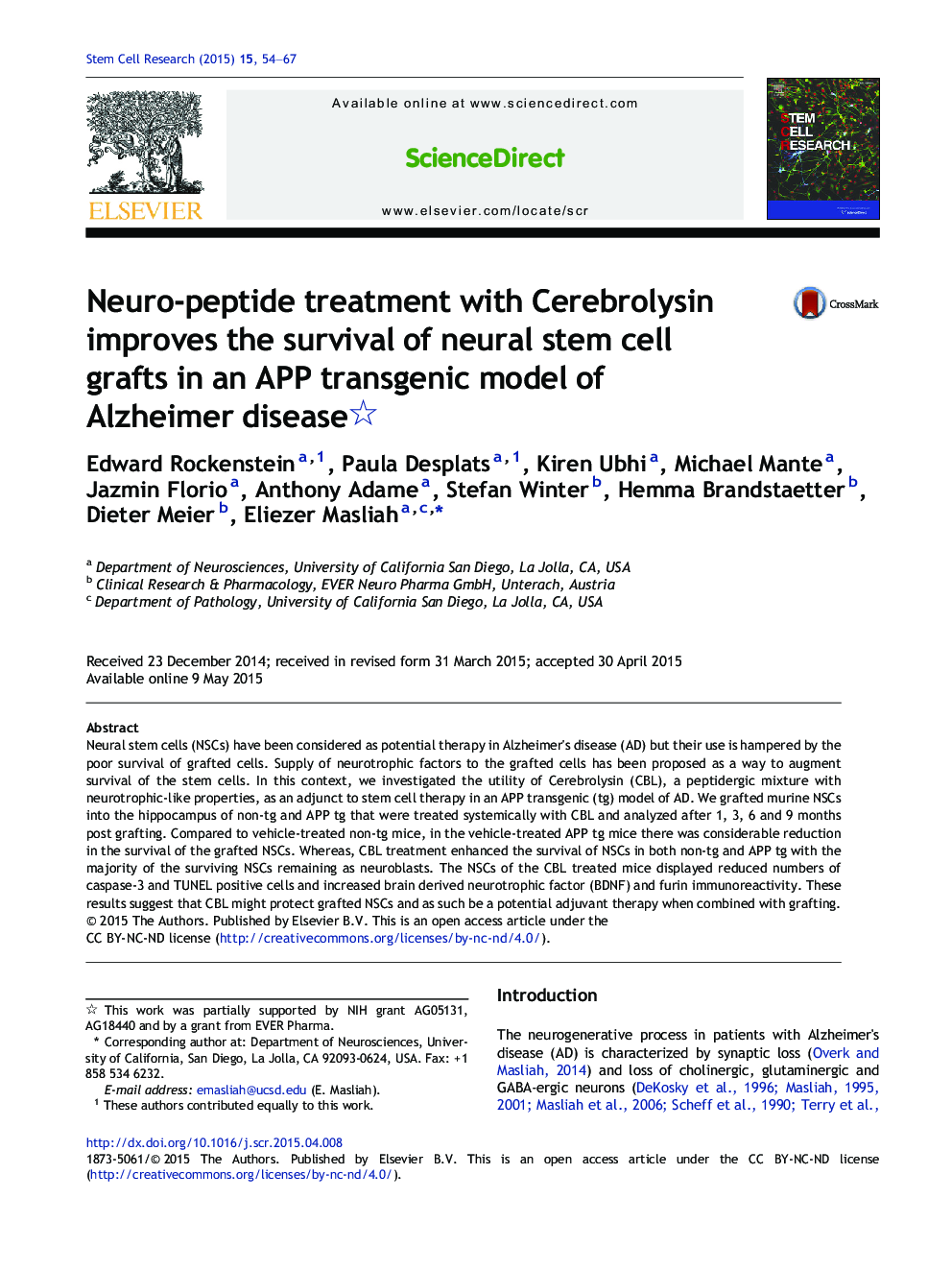| Article ID | Journal | Published Year | Pages | File Type |
|---|---|---|---|---|
| 2094071 | Stem Cell Research | 2015 | 14 Pages |
•Potentially therapeutic use of neural stem cells is hampered by cell poor survival.•We investigated Cerebrolysin as an adjunct to stem cell therapy in a model of AD.•Cerebrolysin treatment enhanced the survival of neural stem cells.•Cerebrolysin may be a potential adjuvant therapy combined with cell-based therapy.
Neural stem cells (NSCs) have been considered as potential therapy in Alzheimer's disease (AD) but their use is hampered by the poor survival of grafted cells. Supply of neurotrophic factors to the grafted cells has been proposed as a way to augment survival of the stem cells. In this context, we investigated the utility of Cerebrolysin (CBL), a peptidergic mixture with neurotrophic-like properties, as an adjunct to stem cell therapy in an APP transgenic (tg) model of AD. We grafted murine NSCs into the hippocampus of non-tg and APP tg that were treated systemically with CBL and analyzed after 1, 3, 6 and 9 months post grafting. Compared to vehicle-treated non-tg mice, in the vehicle-treated APP tg mice there was considerable reduction in the survival of the grafted NSCs. Whereas, CBL treatment enhanced the survival of NSCs in both non-tg and APP tg with the majority of the surviving NSCs remaining as neuroblasts. The NSCs of the CBL treated mice displayed reduced numbers of caspase-3 and TUNEL positive cells and increased brain derived neurotrophic factor (BDNF) and furin immunoreactivity. These results suggest that CBL might protect grafted NSCs and as such be a potential adjuvant therapy when combined with grafting.
